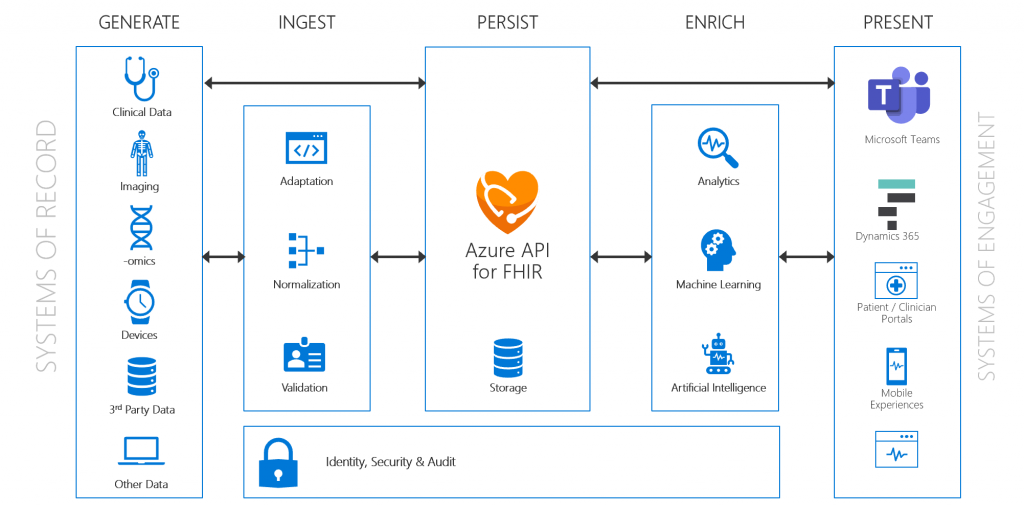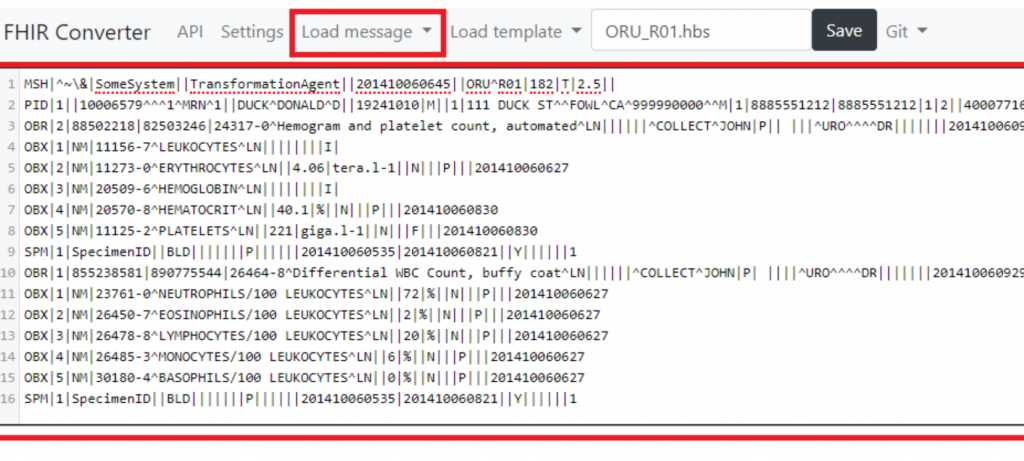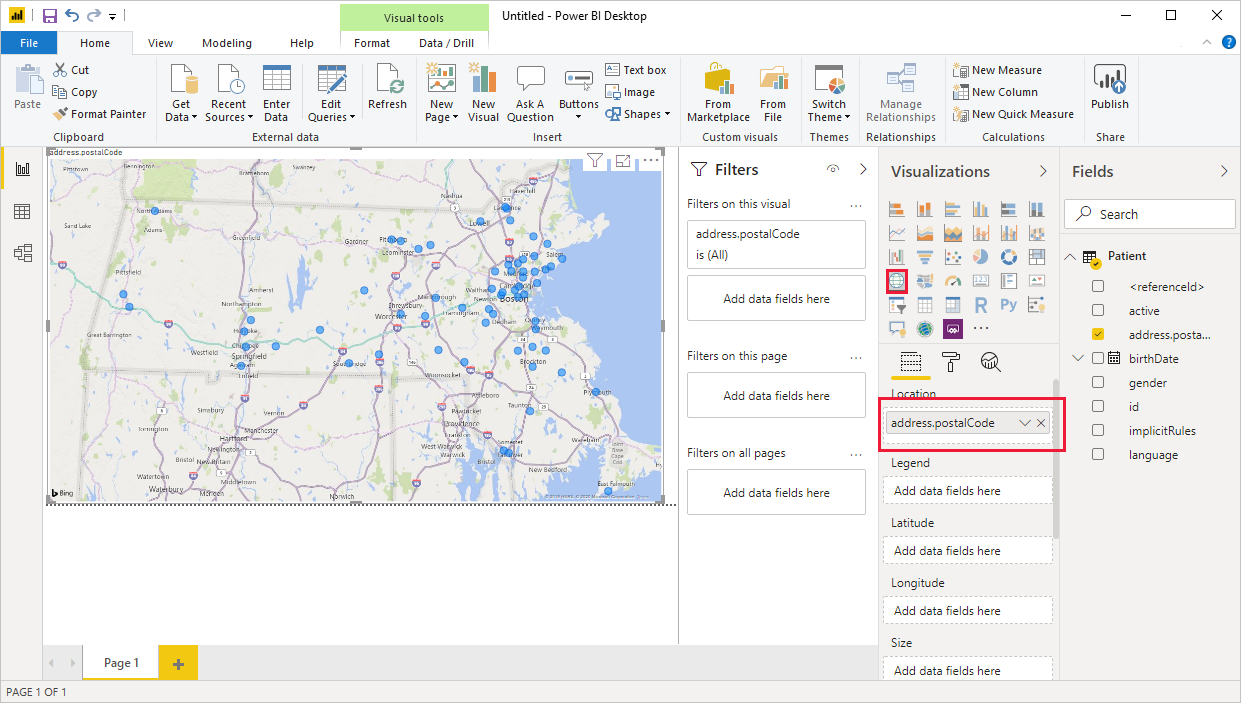In the last decade, technology in healthcare was all about digitizing data, where we have gone from about 15% of digital health records, to over 98% of health records that are in digital form today. We also see that the next decade is about making all that digital data available for research, innovation or empowering our patients with their data. And this needs to be done in a way where people’s privacy are the highest priority, as health data is very personal. A fundamental element in this, is interoperability through FHIR® (Fast Healthcare Interoperability Resource), as today we are all generating a massive amount of digital healthcare data, but all of this data is locked into different sources, formats and protocols. And one way that Microsoft is looking at this, is the acknowledgement of a rising wave of healthcare organizations starting to move their data to the cloud. Probably ten years from now, almost all healthcare organizations will be in the cloud. And so, with that historic shift that will happen, only once, ever, in human history, we need to ensure that we end up in a better place ten years from now than we are now. And interoperability is one of the keys elements in there.
Microsoft has shown its commitment to revolutionizing the healthcare industry in recent times. An example of this are the developments and enablement of interoperability of medical data with the support of FHIR®. A standard designed to facilitate the exchange and management of healthcare data.
The first step of this development was the announcement and availability of the open source FHIR server in the beginning of last year (2019). With a single click and some simple parameterization you can create your own FHIR® server with CosmosDB or SQL as the persistence layer.
In October 2019, Microsoft announced the managed Azure API for FHIR into general availability. And with that, it was the first cloud with a fully managed FHIR® service to work with healthcare data in the native HL7 V4. format A.K.A. FHIR®. With this managed service, Microsoft takes on the operations, maintenance, updates and compliance requirements in the PaaS offering, so you can free up your own operational and development resources. Since then, the FHIR® team has been busy, which led into several developments and extensions to the FHIR® server.

FHIR Server
With the Azure API for FHIR® or the open source FHIR® server, customers can exchange data via the FHIR® API (STU3 or R4 spec) and because Microsoft is treating FHIR® is a “first-class” datatype in Azure, Healthcare organizations can leveraging other PaaS services available on the Azure Platform such as Data Factory, Storage, Data Bricks, reporting and many others services
FHIR® Server Samples
To let customers see the real value of FHIR® and the Azure ecosystem Microsoft created an open source samples Github repository, which will get you up and running in a couple of minutes. The scenario illustrates how to connect a FHIR® server to a web dashboard and also illustrates features such as integrating SMART on FHIR® applications, importing FHIR® resources in bulk or exporting the data via Azure Data Factory into a storage account where it then can be used with services such as Data Bricks. This scenario can be created with a couple of PowerShell commands.
The full setup is shown below

IoMT on FHIR®

Microsoft has expanded their FHIR® portfolio with an Open Source Internet of Medical Things connector. The IoMT FHIR® Connector for Azure allows you to ingest data from IoMT devices and persist the data in FHIR®. You can find this via the a Github project that will allow you to deploy a connector for ingesting high frequency IoMT data and landing the data in a FHIR® server of your choice. You can choose to setup things separately or to deploy a sandbox application.

FHIR® converter
In the beginning of March 2019 Microsoft announced new capabilities for the FHIR® server and one of them is the FHIR® converter. This service will allow you to transform legacy health data into the FHIR® format.
The FHIR® Converter is an open source project that enables the conversion of legacy formatted health data into FHIR®, expanding the use cases for health data and enabling interoperability. Right now, the FHIR® Converter transforms HL7 v2 messages into FHIR® bundles using templates that define the mappings between the two data formats. Leveraging the FHIR® Converter organizations can customize or create their own mapping templates based on their HL7 v2 implementation and transform them into FHIR® bundles.

FHIR® Tools for Anonymization
Another recent development is the FHIR® Tools for Anonymization, yet another open-source project that helps anonymize healthcare FHIR® data. The project includes a command-line tool that can be used on-premises or in the cloud. To start using the service, you will need to use a configuration file, which will specify the de-identification settings to anonymize the data. It also comes with a tutorial and script to create an Azure Data Factory pipeline that reads data from Azure blob store and writes anonymized data back.
Power BI FHIR® Connector
To enable more extended reporting, Microsoft has released released their Power BI FHIR® Connector. With the release of this connector, users can now use their FHIR® data in their Power BI environment. With this, users will have the capability and tools to create rich and insightful tools of engagement that could be potentially used in several collaboration tools.

Bringing this into practice
As a healthcare technology strategist I am grateful that I get the opportunity to work with our healthcare and life science customers in Western Europe.
And when driving innovation with our customers by either enabling personalized care, empowering our care teams or even improve operational outcomes, FHIR® becomes a crucial part in all of these scenarios.
When we want to enable personalized care, the healthcare system needs a standardized and interoperable way to enable remote care via IoMT or how FHIR® becomes the glue to correlate and combine different data sources to enable personalized care.
Another great example on how FHIR® can be used to drive innovation, is how to empower care teams. For this Microsoft has enabled FHIR® on Microsoft Teams. With this, caregivers can use their FHIR data in Teams to support caregivers on the go, or enable scenarios such as multidisciplinary team meetings.
And with the development of the Health Bot Service. Microsoft created a SaaS solution that empowers care organizations to build AI-powered health agents, allowing them to offer their patients or caregivers intelligent, personalized access to health-related information and interactions through a natural conversation experience. The interesting thing about this service, is that is also has FHIR® baked into it, to further allow health organizations to build and use FHIR® as a catalyst to drive innovation and use healthcare data in the best way possible.
Lastly when we are looking into research and machine learning, FHIR® becomes a crucial part in enabling and combining quality data sources. When starting or improving A.I. projects, there is always a lack of sufficient and quality labeled data. A hospital or research facility will need to start collaborating with other organizations to have the needed numbers or standards to create and improve their A.I. models. This is only possible when everyone start to talk the same language and have the needed tools and processes in place to enable sharing in a secure and compliant way.
Let’s get it on FHIR!
Microsoft is committed to data agility and dignity through FHIR® and believe it is the fuel for innovation in healthcare and life science. The future of health is ours to create and I am excited to be at the innovation forefront of that journey with our customers.
Sources

